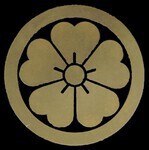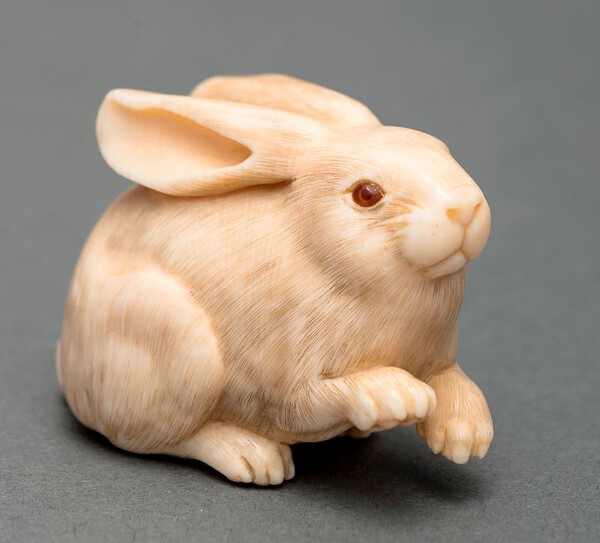-
Posts
3,242 -
Joined
-
Days Won
99
Content Type
Profiles
Forums
Events
Store
Downloads
Gallery
Everything posted by Guido
-

Foreigner Bladesmiths in Japan?
Guido replied to barnejp's topic in General Nihonto Related Discussion
Only half foreign, so I'm not sure if he counts : http://www.militaria.co.za/nmb/topic/25640-swedish-Japanese-swordsmith/ -
Well, I guess we’ll never know how long that wall would have stopped them; after all, it was a force of nature that destroyed the fleet. But it’s all good. When the Mongols send their people, they’re not sending their best. They’re sending people that have lots of problems, and they’re bringing those problems with them. They’re bringing drugs. They’re bringing crime. They’re rapists. And some, I assume, are good people.
-
Ken, it's is called rendaku 連濁, sequal voicing. The "ha" of hako 箱 (box) changes into a "ba" if it's the non-initial portion of a compound. For example, it's hakogaki, but tsubabako.
-
The generation goes always in front of the name, so “sandai Sukenao” is indeed the correct way to write it. The meaning is exactly as Geraint already explained.
-

What blades are Members interested in buying?
Guido replied to barnejp's topic in General Nihonto Related Discussion
I know a Nigerian Prince who has 15 of them, I‘m sure he‘ll contact you soon. -
Ususally tsunagi are made of wood, not bamboo. In all my years of collecting I’ve only seen one made of bamboo for a tantō, but quite a few to replace the kogatana for a kozuka when mounted on a koshirae. The reason for the often heard assumption that tsunagi are made of bamboo might be the degratory term “Takemitsu 竹光“: when an impoverished samurai sold his sword, he had it replaced with a tsunagi so he could still carry the koshirae as a symbol of his rank. Because many famous smith’s names end on –mitsu, those tsunagi were jokingly refered to as “bamboo -mitsu”, i.e. Takemitsu.
-

***** Happy with your sale? Want to contribute? *****
Guido replied to Brian's topic in Swords and Edged Weapons
Herr Hamfisch, efferybody knovs zat zee Germans haf no humor! -
Well, it‘s actually the first one. In any case, the modern writing is 国広.
-
It actually isn’t my discovery, but since I own the tsuba now, here’s the story: An antique dealer in Portland imported a tansu from Japan. He heard a rattle while moving it around, and finally found a secret compartment containing some tsuba. He showed them to Cary Condell at the San Francisco show, who bought them. One was signed (and papered tokubetsu hozon to) …. (hanaremei) Nobuie!!!
-
Well, since this thread doesn’t seem to be limited to tōsōgu anymore, here are two netsuke of mine: A: mumei, attributed to Yoshinaga, Kyōto, ca. 1780 B: Saitō Yasufusa, 1975
- 276 replies
-
- 10
-

-
No, they aint heavy, they are my brothers! Seriously though, I don't see how Dwain could weigh them while still wrapped on the tsuka.
-
FWIW: the description in Japanese says 金無垢 kinmuku, i.e. solid gold. I don't agree with those who say that the tsukamaki is a recent amateur job or the like, looks to me like decent hoso-ito-tsumami-maki - maybe not erveryboy's taste, but I happen to like it; on a tantō it makes the tsuka look less bulky than regular width ito might do. It also looks old, which explains why the diamonds are not perfect anymore. I do, however, agree with those who said that the craftsmanship of the menuki doesn't come anywhere near Yokoya work.The あかんべえ akanbē-like facial expression of one of the shishi looks pretty goofy to me.
-

Hoping for assistance with a translation
Guido replied to John in FL's topic in Translation Assistance
小村宁次 Komura Neji, but I'm pretty sure it's a Chinese fake. -

Help please with another mei translation
Guido replied to drb 1643's topic in Translation Assistance
Shōwa 20 = 1945 -
The two are not necessarily always shown together, and the "fire" in the background looks to me like the trunk of a (partially) hollow tree.
-
I once had a similar problem, and put it into an oven - after about 20 minutes, and a couple of tries to pull it apart (wearing pot gloves ) it finally came loose; however, in my case the glue was epoxy.
-

Help please with another mei translation
Guido replied to drb 1643's topic in Translation Assistance
尾州高蔵寺住竹内兼正作 Bishū Kōzōji jū Takeuchi Kanemasa saku 昭和二十年五月 Shōwa nijūnen gogatsu -
Den Fujishima
-
I think the attribution reads Kanabō Masazane 金房正真.
-
Ah, o.k., that explains it. Still, it's not easy to find a polisher who's willing to do just a "touch-up polish", i.e. nugui-naoshi, many want to the take the polish back a few more stages. I know two who do it, but they prefer that it stays a secret, apparently it's frowned upon by other polishers . Oh, and of course congratulations on your successful shinsa!
-
Only 6 weeks from sending it to the polisher to submitting it for shinsa? Did you pay a hefty premium to the polisher, or threatened him to smash his knee caps with a baseball bat?
-

Brexit Issues, Anyone Else?
Guido replied to Cuirassier's topic in Sword Shows, Events, Community News and Legislation Issues
Divorces can be messy ... -
What I’m seeing is 薩州三川天生士 明治二已二月日 Unusual way to write the year, using a mixture of year number and zodiac cycle. The smith (if 天生士 indeed is a name) seems to be meikan-more, and I’m not sure how to read/pronunce those kanji.




